Safer Streets Littleton: Quick-Build and Pilot Projects
Take the Littleton Traffic Calming Pilots & Protected Bike Lanes Survey
The City of Littleton is committed to making our streets safer for everyone—whether you walk, bike, roll, or drive. As part of our Safer Streets Littleton initiative, we’re installing pilot and quick-build projects to improve safety and mobility in neighborhoods like yours.
This webpage will be regularly updated with the latest project details, including locations, timelines, collected data, and the safety benefits these improvements bring to our community.
Why are these changes coming to your community?

SAFETY: The City of Littleton is focused on reducing crashes and preventing serious injuries by implementing proven safety measures, such as protected bike lanes, improved crossings, and better visibility at intersections. These projects allow the City to address safety concerns quickly and evaluate their effectiveness.
MOBILITY: Whether you walk, bike, roll, or drive, our streets should work for everyone. These projects help improve access and connectivity, making it easier and safer to get where you need to go, no matter your mode of transportation.
COMMUNITY: Streets are more than just roads – they are shared spaces that connect our neighborhoods. By making strategic improvements, the City aims to create safer, more comfortable places that encourage walking, biking, and gathering, ultimately enhancing quality of life in Littleton.
View the Pilot Projects map
Pilot Projects
Installed Projects
Elati Street & Arapahoe Road/Briarwood Avenue
Project Area Map

Existing Conditions

Data Summary
Street Type: Neighborhood Connector
Speed Limit: 25 MPH
Average Daily Traffic (ADT): 1,666
85th Percentile Speed: 31 MPH
Serious Injury and Fatal Crashes since 2022: 1
Planned Improvements
Installation of bike lane green conflict paint through the intersection for visibility of bike riders and modifying delineator quantities based on field observations and community feedback.
Construction Timeline
Installed Fall 2025
Upcoming Projects
Caley Avenue & Datura Street
Project Area Map

Existing Conditions
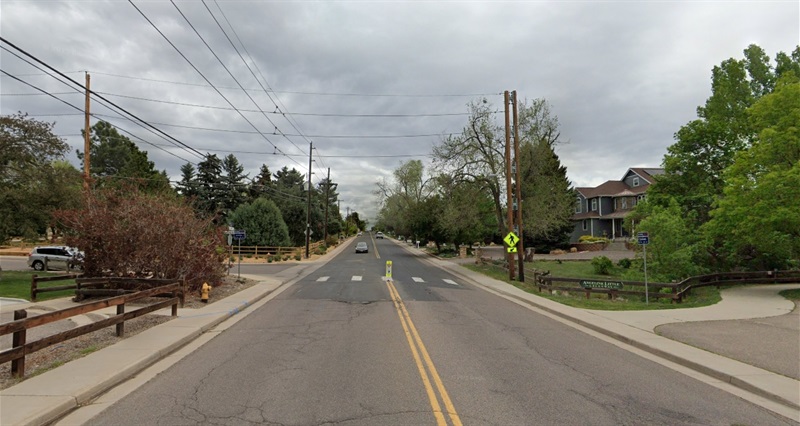
Data Summary
Street Type: Neighborhood Connector/Local
Speed Limit: 25/30 MPH
Average Daily Traffic (ADT): 4,307
85th Percentile Speed: 32 MPH
Serious Injury and Fatal Crashes since 2022: 0
Planned Improvements
Installing speed cushions, curb extensions, and in-street pedestrian crossing signage to reduce speeds and increase crosswalk compliance.
Construction Timeline
Spring 2026
Datura Street
Project Area Map

Existing Conditions
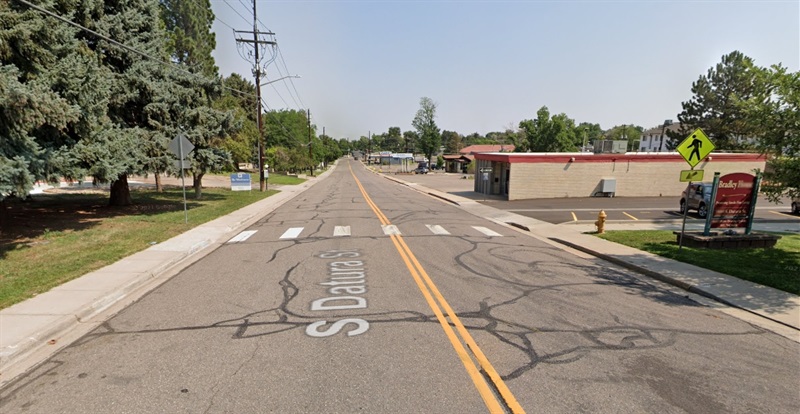
Data Summary
Street Type: Local
Speed Limit: 30 MPH
Average Daily Traffic (ADT): 1,083
85th Percentile Speed: 33 MPH
Serious Injury and Fatal Crashes since 2022: 0
Planned Improvements
Installing speed cushions, curb extensions, and in-street pedestrian crossing signage to reduce speeds and increase crosswalk compliance.
Construction Timeline
Spring 2026
Elati Street at Runyon Elementary
Project Area Map
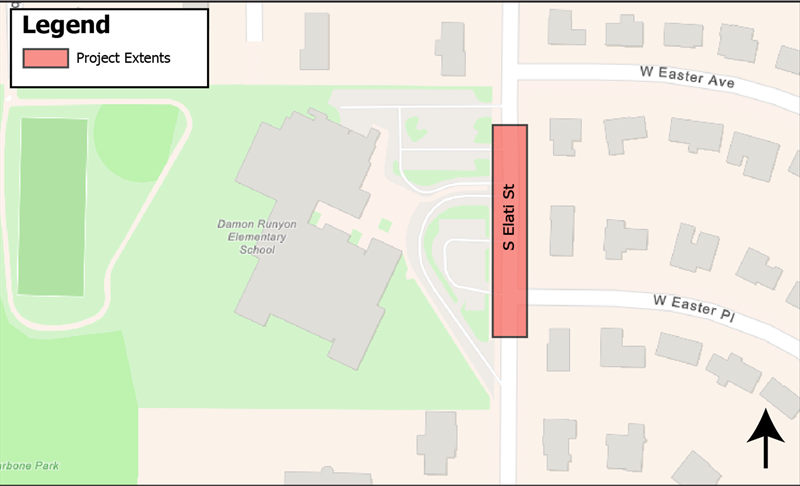
Existing Conditions

Data Summary
Street Type: Neighborhood Connector
Speed Limit: 25 MPH
Average Daily Traffic (ADT): 1,806
85th Percentile Speed: 30
Serious Injury and Fatal Crashes since 2022: 0
Planned Improvements
Installing speed cushions, curb extensions, and in-street pedestrian crossing signage to reduce speeds and increase crosswalk compliance.
Construction Timeline
Spring 2026
Fremont Avenue & High Line Canal Trail
Project Area Map
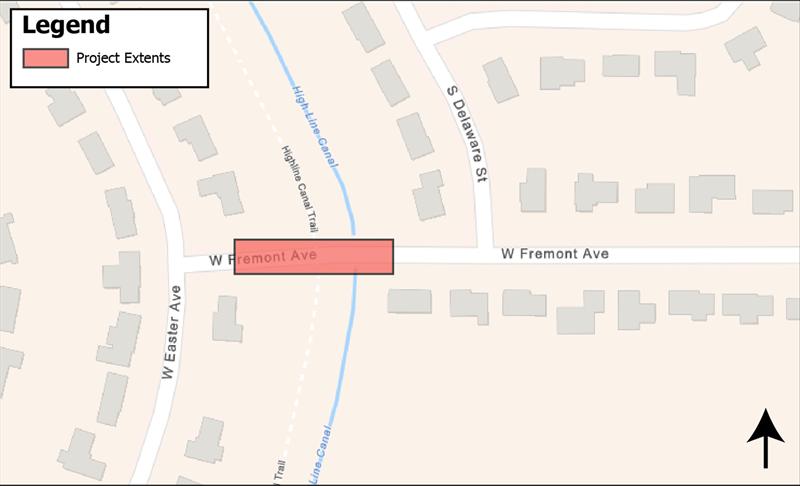
Existing Conditions
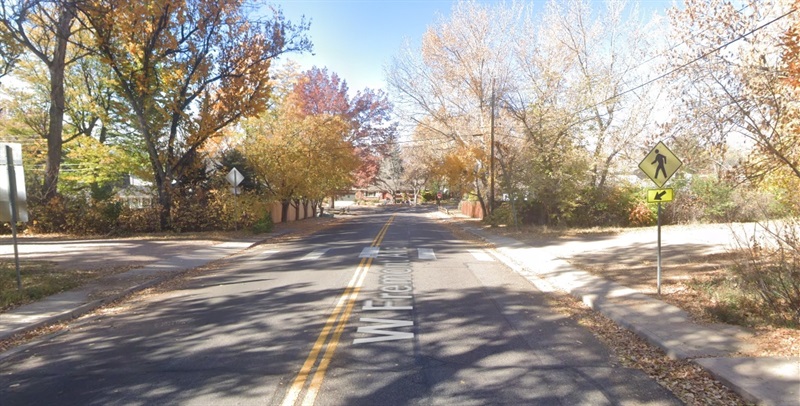
Data Summary
Street Type: Neighborhood Connector
Speed Limit: 25 MPH
Average Daily Traffic (ADT): 2,672
85th Percentile Speed: 20
Serious Injury and Fatal Crashes since 2022: 0
Planned Improvements
Installing curb extensions, and in-street pedestrian crossing signage to reduce speeds and increase crosswalk compliance.
Construction Timeline
Spring 2026
Gallup Street & High Line Canal Trail
Project Area Map
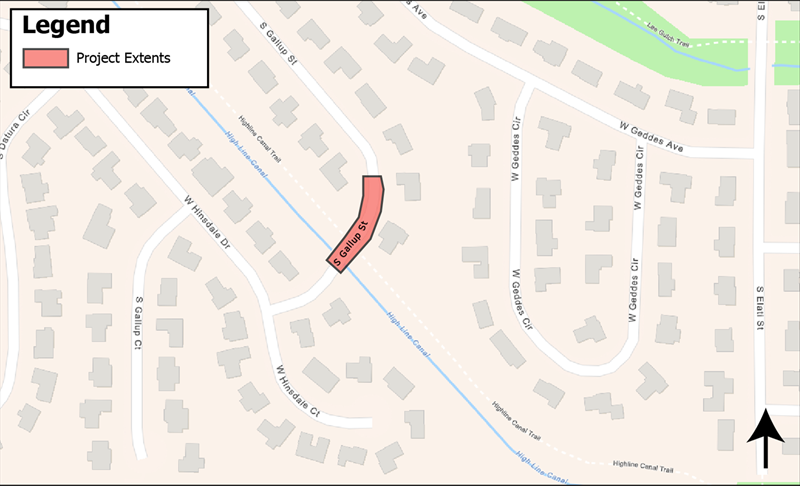
Existing Conditions

Data Summary
Street Type: Local
Speed Limit: 25 MPH
Average Daily Traffic (ADT): 159
85th Percentile Speed: 28
Serious Injury and Fatal Crashes since 2022: 0
Planned Improvements
Installing speed cushions, curb extensions, and in-street pedestrian crossing signage to reduce speeds and increase crosswalk compliance.
Construction Timeline
Spring 2026
Ridge Road & Apache Street
Project Area Map

Existing Conditions
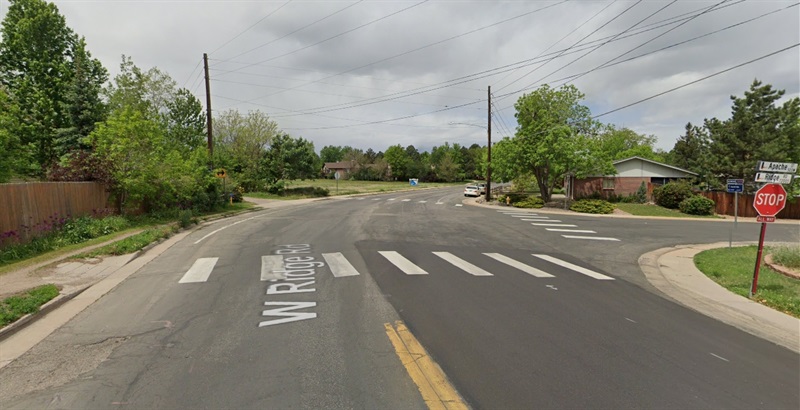
Data Summary
Street Type: Neighborhood Connector/Local
Speed Limit: 30 MPH
Average Daily Traffic (ADT): 2,743
85th Percentile Speed: 32
Serious Injury and Fatal Crashes since 2022: 0
Planned Improvements
Installing curb extensions and in-street pedestrian crossing signage to reduce speeds and increase crosswalk compliance. Bike lane protection along the east-bound intersection to connect with the High Line Canal Trail.
Construction Timeline
Spring 2026
Upcoming Revisions
Lake Avenue & Spotswood Avenue/Sterne Parkway
Project Area Map

Existing Conditions

Data Summary
Street Type: Neighborhood Connector
Speed Limit: 30 MPH
Average Daily Traffic (ADT): 1,315
85th Percentile Speed: 26 MPH
Serious Injury and Fatal Crashes since 2022: 0
Planned Improvements
Upgrading curb extensions by replacing portions of existing materials with Zipper curbing for improved durability and visibility.
Construction Timeline
Spring 2026
Lowell Boulevard & Arrowhead Road
Project Area Map

Existing Conditions
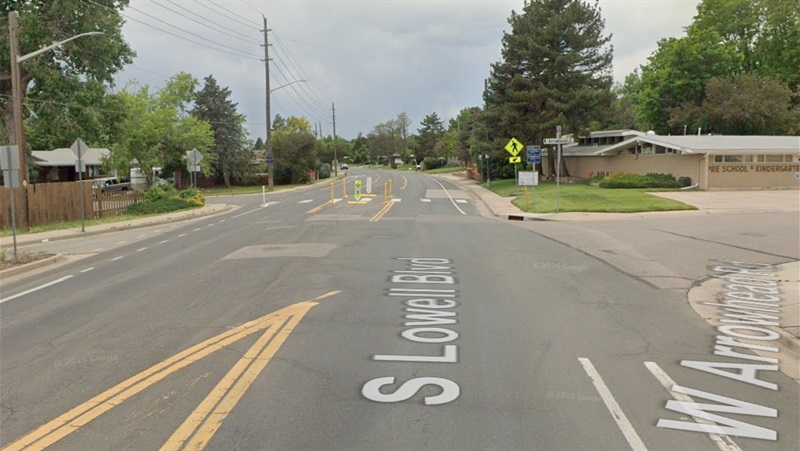
Data Summary
Street Type: Neighborhood Connector
Speed Limit: 30 MPH
Average Daily Traffic (ADT): 6,000
85th Percentile Speed: 37 MPH
Serious Injury and Fatal Crashes since 2022: 0
Planned Improvements
Installing speed cushions to reduce speeds and in-street pedestrian crossing signage on a raised curb to increase crosswalk compliance.
Construction Timeline
Spring 2026
Prince Street & Lee Gulch Trail Crossing
Project Area Map
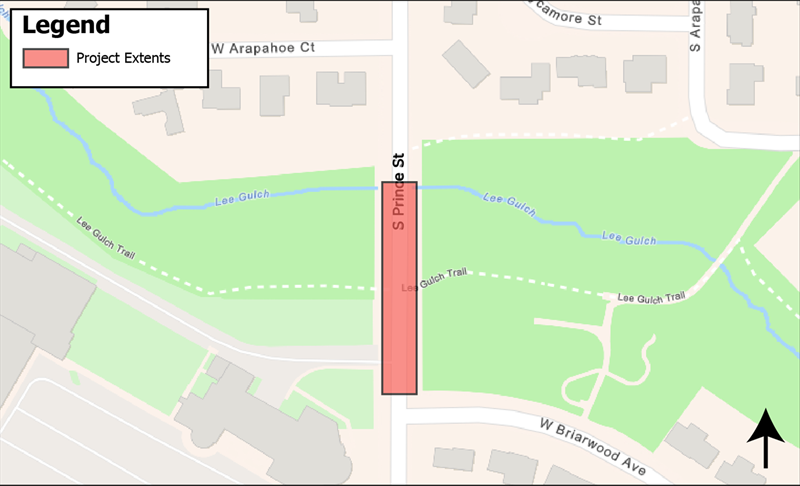
Existing Conditions
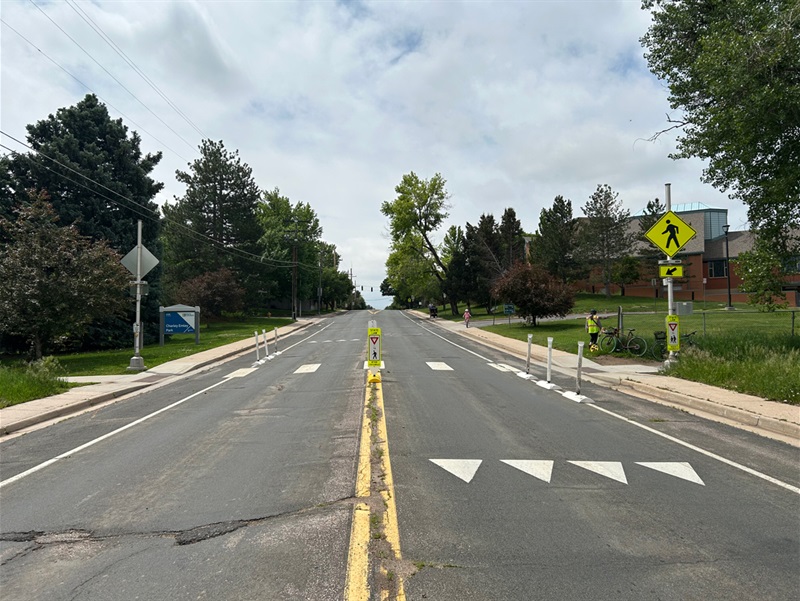
Data Summary
Street Type: Neighborhood Connector
Speed Limit: 30 MPH
Average Daily Traffic (ADT): 2,834
85th Percentile Speed: 38 MPH
Serious Injury and Fatal Crashes since 2022: 0
Planned Improvements
Installing speed cushions to reduce speeds and in-street pedestrian crossing signage on a raised curb to increase crosswalk compliance.
Construction Timeline
Spring 2026
Shepperd Avenue & Gallup Street
Project Area Map
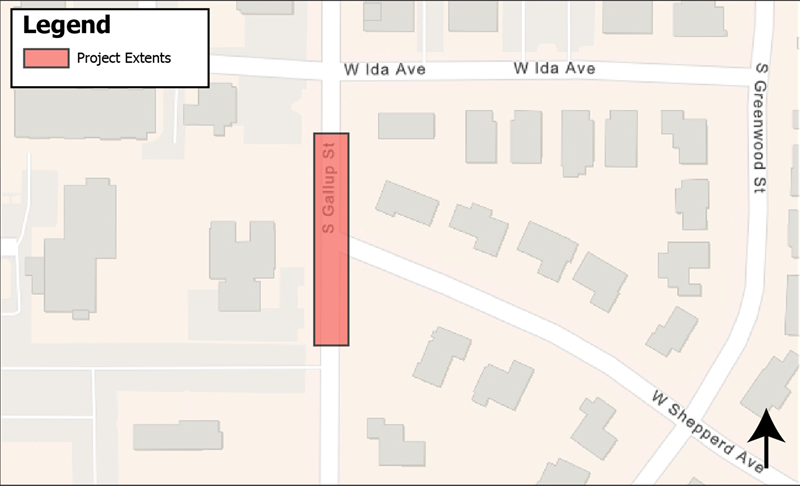
Existing Conditions
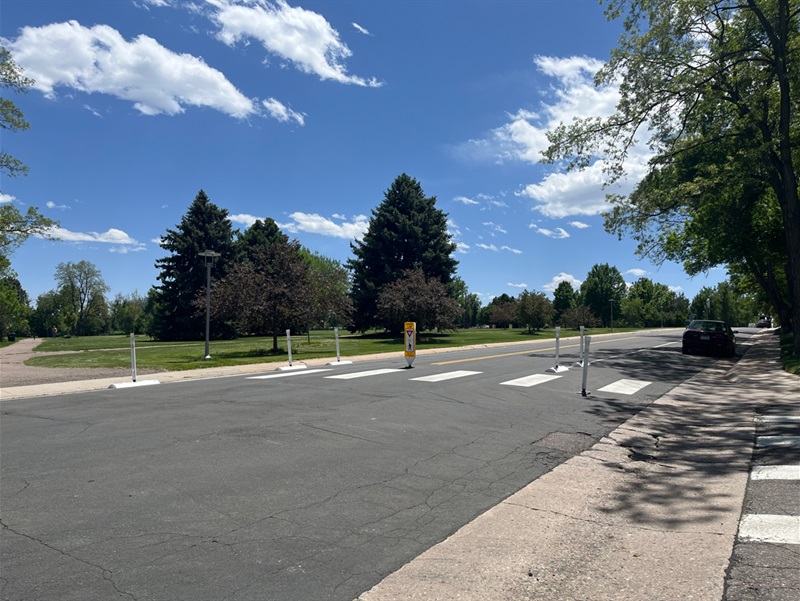
Data Summary
Street Type: Mixed Used Downtown Connector/Neighborhood Connector
Speed Limit: 30 MPH
Average Daily Traffic (ADT): 2,444
85th Percentile Speed: 33 MPH
Serious Injury and Fatal Crashes since 2022: 0
Planned Improvements
Installing speed cushions to reduce speeds and in-street pedestrian crossing signage on a raised curb to increase crosswalk compliance.
Construction Timeline
Spring 2026
Sterne Parkway & Littles Creek Park
Project Area Map

Existing Conditions

Data Summary
Street Type: Neighborhood Connector
Speed Limit: 25 MPH
Average Daily Traffic (ADT): 1,401
85th Percentile Speed: 32 MPH
Serious Injury and Fatal Crashes since 2022: 0
Planned Improvements
Upgrading existing layout of materials with additional curb extensions to increase crossing compliance and slow speeds.
Construction Timeline
Spring 2026
Windermere Street & Lee Gulch Trail Crossing
Project Area Map

Existing Conditions

Data Summary
Street Type: Neighborhood Connector
Speed Limit: 30 MPH
Average Daily Traffic (ADT): 1,661
85th Percentile Speed: 35 MPH
Serious Injury and Fatal Crashes since 2022: 0
Planned Improvements
Installing speed cushions to reduce speeds and in-street pedestrian crossing signage on a raised curb to increase crosswalk compliance.
Construction Timeline
Spring 2026
Quick-Build Projects
Upcoming Projects
Irving St
Project Area Map
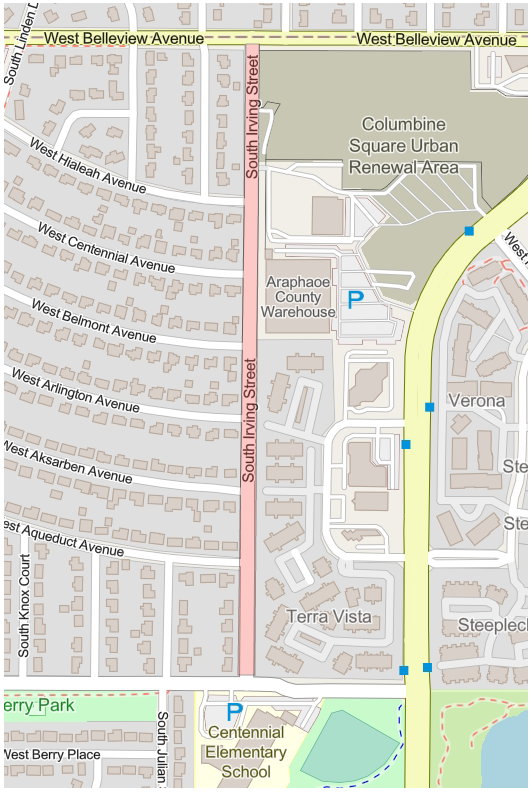
Existing Conditions
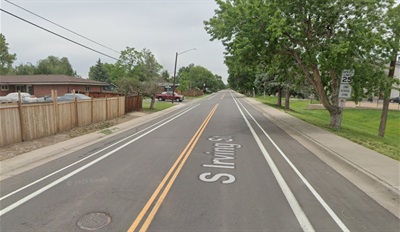
Data Summary
Street Type: Neighborhood Connector
Speed Limit: 25 MPH
Average Daily Traffic (ADT): 1,428
85th Percentile Speed: 37 MPH
Serious Injury and Fatal Crashes since 2022: 0
Planned Improvements
Upgrading to protected bike lane using “Zebra” lane separators and delineators and installing speed cushions for traffic calming.
Construction Timeline
Construction for this project will begin in early Fall 2025.
Pennsylvania Street
Project Area Map

Existing Conditions
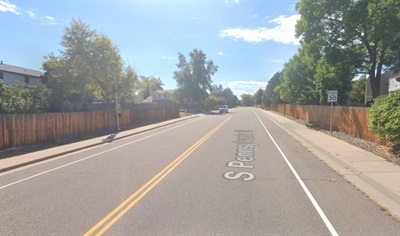
Data Summary
Street Type: Neighborhood Connector
Speed Limit: 30 MPH
Average Daily Traffic (ADT): 3,000
85th Percentile Speed: 24 MPH
Serious Injury and Fatal Crashes since 2022: 0
Planned Improvements
Upgrading to protected bike lane using rubber parking stops and delineators. On-street parking along Pennsylvania Street between Mineral Avenue and Nichols Drive will be removed to accommodate the protected bike lane. Field users are encouraged to use the available parking lots at Powell Middle School once this infrastructure is installed.
Example of the materials being used:
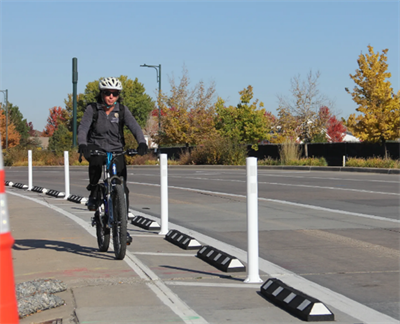
Construction Timeline
Storm sewer repairs and repaving of Pennsylvania Street from Mineral Avenue to Phillips Avenue is planned for in the coming years. Buffered bike lanes will be striped in 2025, with full installation of the protected bike lanes to come as part of the pavement improvement work in the future.
Windermere Street
Project Area Map
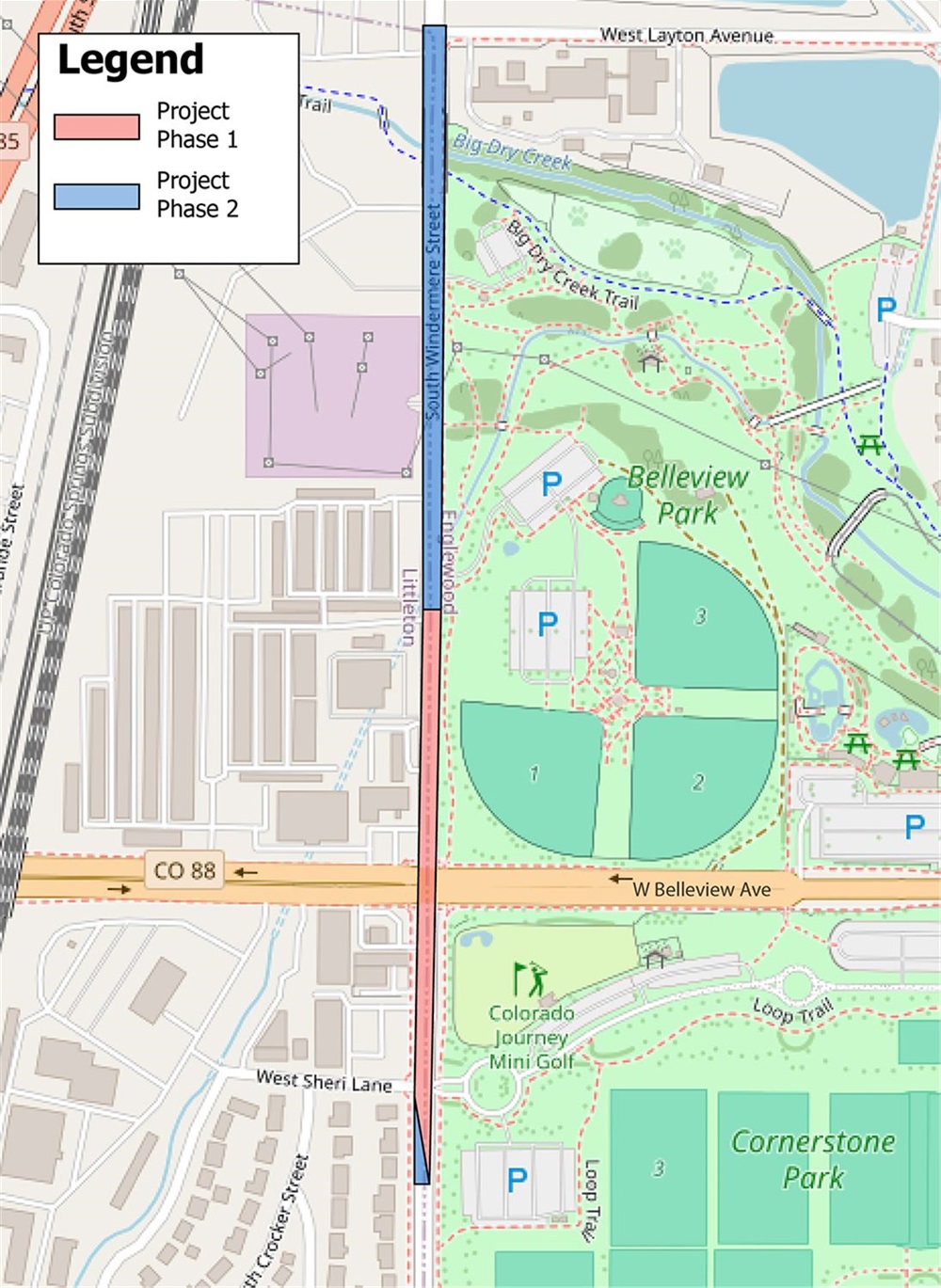
Existing Conditions

Data Summary
Street Type: Neighborhood Connector
Speed Limit: 30 MPH
Average Daily Traffic (ADT): 16,447
85th Percentile Speed: 34 MPH
Serious Injury and Fatal Crashes since 2020: 0
Planned Improvements
Upgrading to protected bike lane using lane separators along Windermere Street between Sheri Lane and Layton Avenue. Additionally, a protected bicycle intersection at Windermere Street and Belleview Avenue will be installed; protected intersections physically separate people walking, biking, and rolling from vehicles up to and through the intersection and make it easier for these travelers to see and be seen by drivers.
Example of the materials being used:

Construction Timeline
Repaving of Windermere Street from Layton Avenue to Prentice Avenue is planned for 2026. As part of the pavement improvement work, crews will install the protected bike lane from Sheri Lane to Layton Avenue.
Installed Projects
Belleview Avenue
Project Area Map

Existing Conditions

Data Summary
Street Type: Neighborhood Connector
Speed Limit: 35 MPH
Average Daily Traffic (ADT): 15,400
85th Percentile Speed: 37 MPH
Serious Injury and Fatal Crashes since 2022: 2
Planned Improvements
Upgrading to protected bike lane using Orca Lane Separator.
Construction Timeline
Construction on this project began in July 2025 and is planned to be complete by end of September.
Church Avenue
Project Area Map

Existing Conditions

Data Summary
Street Type: Mixed Use Downtown Connector
Speed Limit: 30 MPH
Average Daily Traffic (ADT): 4,307
85th Percentile Speed: 32 MPH
Serious Injury and Fatal Crashes since 2022: 7 (1 possible injury, 6 non-injury)
Planned Improvements
Upgrading to protected bike lane on the south side of Church Ave using “Safe-T Lane Dividers,” a precast concrete barrier.
Construction Timeline
This project was installed in early September 2025.
Phillips Avenue
Project Area Map

Existing Conditions

Data Summary
Street Type: Neighborhood Connector
Speed Limit: 30 MPH
Average Daily Traffic (ADT): 1,900
85th Percentile Speed: 25 MPH
Serious Injury and Fatal Crashes since 2022: 1
Planned Improvements
Upgrading to protected bike lane using "Zebra" lane separators and delineators. On-street parking along Phillips Avenue between Pennsylvania Street and Clarkson Street will be removed to accommodate the protected bike lane.
Construction Timeline
Construction on this project began in July 2025 and installation was completed by early August.
Past Projects
2024 Pilot Projects
Littleton's Public Works team installed numerous pilot projects geared toward bike and pedestrian safety in summer 2024, allowing them to test methods and materials for wider implementation going forward as part of the Safer Streets Littleton campaign. Pilot projects include:
- Four trail-crossing improvements identified by the 2023 Littleton Linkages trail study, on the borders of Cornerstone, Ketring, Powers, and Sterne Parks. Crossings feature new crosswalks and "bulb-out" areas, which extend the curb at an intersection to shorten the crossing distance and improve visibility for pedestrians.
- Four lane-miles of protected bike lanes along Belleview Avenue, Windermere Street, Pennsylvania Street, and Phillips Avenue. These are the first protected bike lanes in Littleton, adding physical barriers between riders and traffic – a step up from “buffered” bike lanes which demarcate a wide area between traffic lanes and bike lanes. These projects allow planners and engineers to test different types of barriers and how they impact not just rider safety but maintenance needs like street sweeping, snowplowing, and drainage.
- Reevaluation of pilot projects installed in 2023, including trail crossings, bikeway, and intersection enhancements. Existing projects will see further improvements based on data collection over the previous year, including stronger traffic calming measures in areas where speeding remains an issue.
- Pedestrian improvements in the area surrounding Euclid Middle School, including new crosswalks, bulb-outs, and signage upgrades.
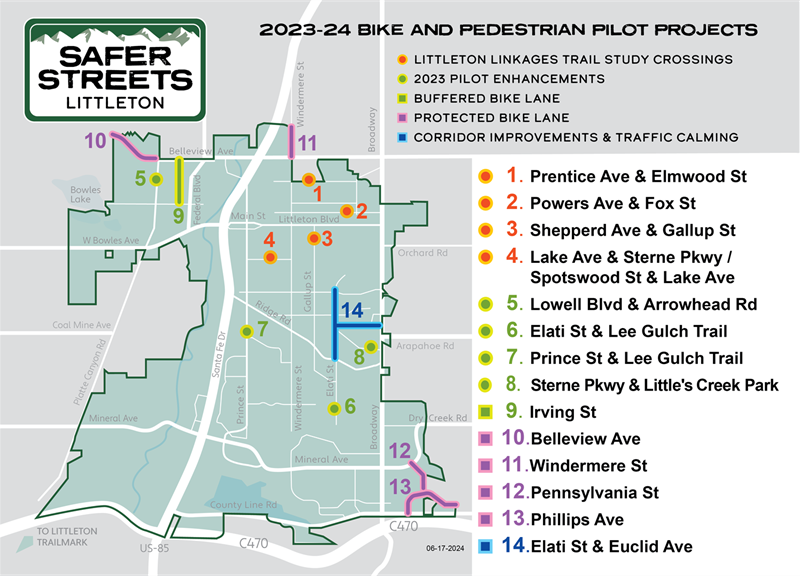
Additional Resources
Glossary
Traffic Calming Terms
Vertical Protection
- Delineator: A flexible, plastic post that is between 2 to 4ft tall and bolted into the roadway or on top of a temporary curb to provide a clear visual signal to drivers that a space is not meant for vehicles. Also called flex post or plastic bollard.
- Temporary Curb: A durable, plastic curb that is raised on both sides and is bolted to the road. These are typically installed with delineators on top of them.
Slow Speeds
- Bulb-out: Delineators and temporary curb are used to extend the corner of the curb at an intersection out into the street and shorten the crossing distance for pedestrians while reducing vehicle turning speeds.
- Chicane: A combination of two or more alternating bulb-outs placed mid-block to slow vehicle speeds by narrowing and realigning the roadway.
- Pinch-point: Delineators and temporary curb are used mid-block to extend the curb space and narrow the roadway to slow down vehicle traffic and provide a safer crossing on low-volume streets.
Bicycle Facilities
- Buffered bike lane: A conventional bike lane but with extra buffer space, often painted with diagonal lines, between the bike lane and the car lanes, providing more distance and safety for bicyclists.
- Protected bike lane: A buffered bike lane that now has vertical protection installed in the buffer zone between the vehicle lane and the bike lane to signal to drivers.
Safe Pedestrian Crossings
- Advanced pedestrian signs: Traffic signs are placed before crosswalks or pedestrian areas like school zones to alert drivers to the presence of pedestrians and encourage them to slow down and yield.
- In-street crossing signs: Pedestrian traffic signs that are placed within the roadway at a crosswalk to increase driver awareness and visibility of pedestrians, often helping to slow traffic through crosswalks.
Additional Strategies
- Daylighting: Delineators and temporary curb are used to restrict drivers from parking at intersections and adjacent to crosswalks to provide visibility for crossing pedestrians.
- Short-term striping: Low-cost paint is used that fades in about 9 to 12 months.
Other Terms
Street Types
- As defined in the 2019 Transportation Master Plan, street types factor in the typical functional classification system while also accounting for the surrounding land use intensity and character which affect the street’s operation and design.
- See Transportation Master Plan(PDF, 14MB), page 40 and page 125, for more details
Average Daily Traffic (ADT)
- Average daily traffic (ADT) is the number of vehicles that pass a given point on a road during a specific time period.
- The City collected ADT through various methods including tube counters, radar counters, and in-person observations.
85th Percentile Speed
- The speed at or below which 85% of drivers travel on a road.
- The 85th percentile speed is typically taken from speed data collected during a 24-hour weekday period.
Serious Injury and Fatal Crashes
- A fatal injury is any injury that results in death within 30 days of the reported crash.
- A serious injury is any injury other than a fatal injury which prevent the injured person from walking, driving, or normally continuing the activities they were capable of performing before the crash occurred.
FAQs
Why was my street chosen for one of these projects?
- The City selects locations for Safer Streets Littleton pilot projects and quick-builds based on a combination of factors, including the following:
- Speed and Traffic Data - Streets with high vehicle speeds or traffic volumes may be prioritized to improve safety.
Planned Roadway Improvements - Locations scheduled for repaving or restriping provide an opportunity to test safety enhancements efficiently.
- Crash History- Areas with a history of crashes, particularly those involving people walking and biking, may be chosen for safety interventions.
- Roadway and Land Use Context - Factors such as street width, number of lanes, nearby schools, parks, or businesses influence project selection.
- Community Feedback - Input from residents and stakeholders helps identify areas where safety concerns exist.
How long will construction last?
- Because the City uses quick-install materials for these projects, construction is typically completed within a few days. Larger projects, such as those spanning an entire corridor, may take multiple weeks . However, timelines can vary depending on weather conditions. The City's goal is to minimize disruption while making safety improvements as efficiently as possible.
Why does the City install these treatments using white plastic posts?
- Installing white plastic posts, or delineators, is a relatively quick and low-cost process. Posts can be installed and maintained by City staff, as well as temporarily removed if necessary due to emergencies, heavy snow, or other conditions. Just like a seamstress would create a practice garment with a cheaper fabric to see how it fits and make adjustments before using expensive fabric, the city is first using low-cost, quick-to-install materials to test and refine the design and materials before seeking to make them permanent.
To submit a neighborhood traffic safety issue the City should know about, submit an online request here.